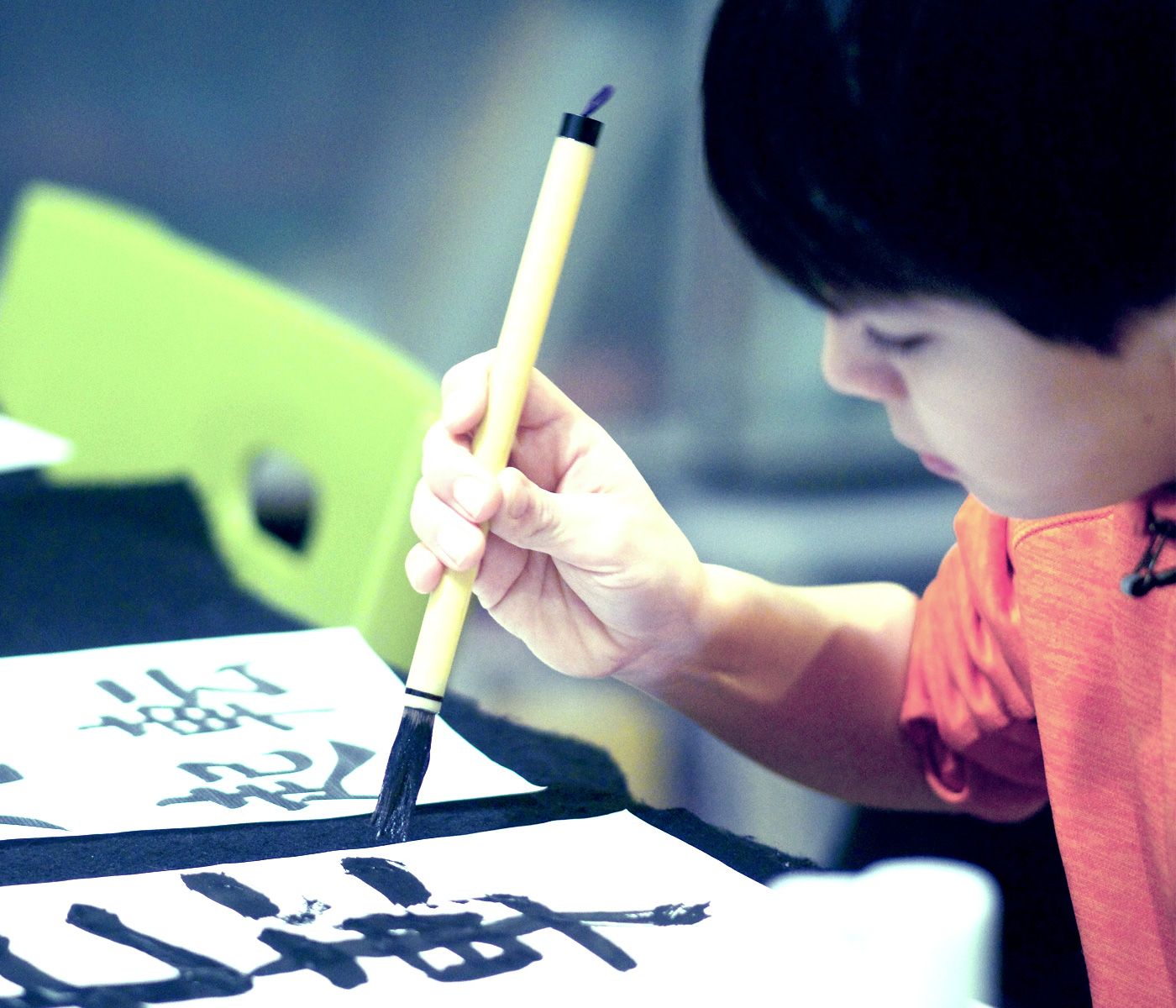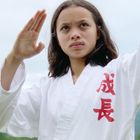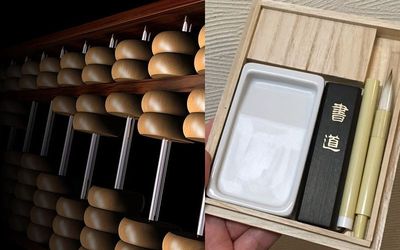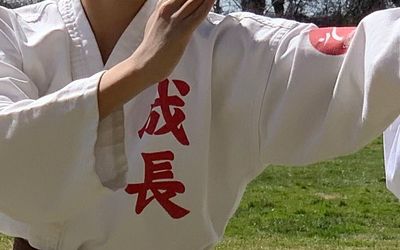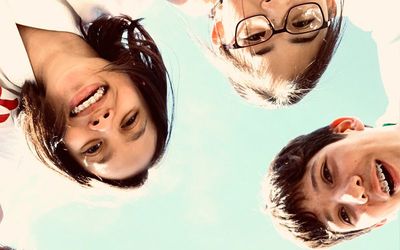七転び八起き
If you fall down 7 times, you’ve got to get up 8 times.
Our Mission
8 Times Foundation’s mission is to provide children with a safe space to develop maturity, skills, knowledge and confidence that will help them identify and achieve wholesome, ambitious goals.
In an era of dwindling public funding for foreign language, art and physical education, 8 Times Foundation Inc. is standing up for children.
We help children and young adults from 4 to 16 years attend Kids Interdisciplinary Culture and Karate® (“KICK”), which is a powerful extracurricular program of martial and cultural arts program that enhances physical and mental health and intercultural tolerance. The curriculum has two components: (1) physical fitness enhancement through karate training and (2) cultural studies including Japanese language and abacus.
KICK™, which is unique in metro-DC, enhances self-defense preparedness, physical fitness, intellectual capacity and citizenship. Children who participate in KICK™ feel great about themselves because they possess knowledge and skills that are rare in our society and look great because they’re physically fit.
KICK™
Kids Interdisciplinary Culture and Karate® (KICK™) is a unique program developed by Seichou Karate® for the physical, intellectual and character development of children.
Benefits
KICK™ combines three elements to encourage participants’ holistic growth:
- Japanese language for intellectual and interpersonal communication
- Japanese abacus to teach children to embrace mathematics
- Japanese karate to enhance mental strength and life-long physical fitness
“Seichou” means “growth” in Japanese and the goal of Seichou Karate® is to assist parents in keeping their children on track to a wholesome future with a unique Japanese cultural immersion program that goes far beyond mere punching and kicking. KICK™ consists of in-depth physical fitness, Japanese language and abacus study. The Program’s goal is to build students’ intellectual and physical self-confidence for them to become better members of their community and future leaders.
Curriculum
a fully balanced curriculum
Seichou Karate®
Component 1
Seichou traditional Japanese karate is the practice of empty-handed self-defense for life-long holistic mind and body development. Our philosophy emphasizes self-control and non-violent dispute resolution.
Rapid Results
Regular practice of Seichou Karate® produces rapid results by developing strong, flexible muscles and good cardiovascular fitness. After several months under our tutelage, students display greater concentration, self-confidence, and maturity.
Community
Additionally, in Seichou Karate® we require intermediate students to mentor junior students and newcomers. In this way, students develop a sense of community and camaraderie that transcends the physical aspect of this art form.
Life-long Habits
Ultimately, the Seichou Karate® regimen engenders life-long habits for physical and mental health that enable students to accomplish ambitious academic and professional goals.
Classes Include:
- Yoga-based warm-up to build strength, enhance flexibility and improve breathing.
- Basic Technique practice teaches students how to punch, kick, block, and move for superb coordination, grace and strength.
- Movement Patterns, resembling stylized dances, in which students confront imaginary opponents for cardiovascular fitness and agility.
- Sparring between partners in a controlled context for self-control, self-confidence, and self-defense.
Japanese Language
Component 2
Japanese Language is an indispensable part of Seichou Karate® training because it connects students with the culture that gave rise to karate.
Curriculum COVERS:
- Identification and utilization of parts of speech
- Acquisition and utilization of grammatical patterns
- Vocabulary acquisition by part of speech
- Articulation presented in an age-appropriate manner: (1) self-introduction, (2) identification and description of colors, animate and inanimate objects, elements of the natural and man-made environment, (3) relating experiences and thoughts
Cultural Orientation
Component 3
Cultural Orientation is an indispensable part of language acquisition and is essential for learning tolerance for different people. Therefore, based on the Director’s five years of professional experience in Japan the curriculum will cover:
CURRICULUM COVERS:
- Japanese sensibilities: non-verbal communication, etiquette, common sense, and aesthetics
- Japanese holidays and special annual events
- Lifestyles of Japanese students
- Geography: the Japanese map; the relationship of people to the natural environment; how geography has shaped culture and national character
- Japanese dietary habits
- Japanese music, theatre, and film
- Japanese traditional and contemporary sports and leisure
Japanese Abacus
Component 4
An abacus (“soroban”) is an ancient arithmetic computational device invented by the Chinese around 500BC. For 2,500 years, the abacus has spread around the globe such that, today, it has been modified into many configurations and sizes.
All Kids Should Learn Abacus! In the U.S., many kids either fear or don’t like math. So, it’s no coincidence that most adults don’t like it either. Yet, many adults feel that if they had learned to enjoy math in childhood, then they might not dread math today. So, the challenge for math teachers and for parents is to motivate children as early as possible to learn that numbers are friends that can be fun and tremendously helpful throughout life. Abacus study is a great way to accomplish this task!
BENEFITS OF ABACUS STUDY
- Eliminates fear of mathematics while building confidence & self-esteem
- Enhances computational skills: addition, subtraction, multiplication and division
- Establishes a powerful foundation for advanced mathematics
- Cultivates problem-solving skills while increasing capacity for linear thinking and logical reasoning
- Strengthens concentration and observation
- Heightens visualization, memory, and listening skills
- Most importantly, Abacus study makes math meaningful, useful and fun!
Japanese Calligraphy
Component 5: Electives
The art of Japanese calligraphy (“shodo”)
which originated in China, is the practice of writing pictograms with an ink-drenched brush and a focused mind. It has been suggested that shodo enhances overall academic performance at the primary school level. As in Japan, the goal of this class will be for children to develop penmanship, digital dexterity, aesthetic sensitivity, patience and self-control.
Students will learn Calligraphy Background and Fundamentals:
- How to identify, use, and care for equipment
- History of shodo
- Shodo’s role in contemporary Japanese society
- Etiquette and procedures for shodo class
Each class will include the following activities:
- Japanese language greetings
- A period of quiet to separate shodo time from preceding classes and activities
- Warm-up with 5-circle exercises
- Pen to paper exercises in which students practice of the character(s) of the day
- Instructor’s review of students’ work
- Clean-up
- Parting salutations
Flower Arrangement
Component 5: Electives
Ikebana (flower arranging)
is the art of beautifully arranging plants in vases and other containers that evolved in Japan over seven centuries. Ikebana is also heartfelt hospitality. A student of ikebana seeks to arrange cut stems, leaves, and flowers in a way that they seem to be alive and growing from the flower vase, which represents the earth. Additionally, ikebana seeks to unite the life force of the plants with the spirit of the person arranging them to create beautiful works of art.
Students will learn Ikebana Background and Fundamentals:
- How to identify, use, and care for equipment
- History of ikebana and role in contemporary Japanese society
- Etiquette and procedures for ikebana class
Each class will include the following activities:
- Japanese language greetings
- A period of quiet to separate ikebana time from preceding classes and activities
- How to choose plants, vases, or other media
- How to choose vases or other media
- Theory of how to create flower arrangements
- Students create their own arrangements and instructors review work
Instructor’s review of students’ work
Clean-up and parting salutations


